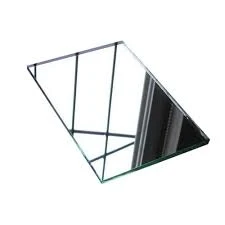

Understanding Low-E Glass Pricing A Comprehensive Overview
Low-emissivity (Low-E) glass is a type of energy-efficient window glazing that has become increasingly popular in both residential and commercial buildings. Its unique property of reflecting infrared energy while allowing visible light to pass through significantly enhances a building's energy efficiency. Given the rising energy costs and the growing emphasis on sustainable building practices, consumers and builders alike are keen to understand the pricing dynamics of Low-E glass. In this article, we will explore various factors influencing Low-E glass pricing, its benefits, and how to make informed purchasing decisions.
Factors Influencing Low-E Glass Prices
1. Manufacturing Process Low-E glass undergoes a complex manufacturing process involving the application of a microscopically thin coating that reflects heat. This specialized treatment contributes to higher production costs compared to standard glass. The more advanced the technology used to produce the Low-E coating, the higher the price of the final product.
2. Type of Low-E Glass There are various types of Low-E glass available, including soft coat and hard coat options. Soft coat Low-E glass typically offers better insulation properties and is often more expensive due to its manufacturing intricacies. Conversely, hard coat Low-E glass is more durable and cost-effective but may have slightly lower energy efficiency.
3. Size and Thickness The size and thickness of the glass also play a crucial role in determining the price. Custom-sized Low-E glass units that fit specific architectural requirements tend to be more expensive than standard sizes. Similarly, thicker panes designed for greater insulation or impact resistance will incur additional costs.
4. Market Demand and Availability The demand for energy-efficient building materials has surged in recent years, influencing Low-E glass pricing. Factors such as local market dynamics, availability of raw materials, and transportation costs can cause fluctuations in price. In regions where energy efficiency is mandated by regulations or supported by incentives, demand for Low-E glass often rises, impacting its market price.

5. Installation Costs While Low-E glass may have a higher upfront price, it’s essential to consider the long-term savings on energy bills. Installation costs can vary depending on the complexity of the installation, the type of frame used, and the overall project scope. A professional installation is crucial to maximizing the energy efficiency benefits provided by Low-E glass.
Benefits of Low-E Glass
Investing in Low-E glass can lead to substantial benefits. Firstly, it reduces heat loss in winter and minimizes heat gain in summer, enhancing overall indoor comfort. This property translates into lower heating and cooling costs, resulting in significant savings over time. Moreover, Low-E glass helps protect interior furnishings from harmful UV rays, which can cause fading of fabrics and artwork. Finally, utilizing energy-efficient products like Low-E glass contributes to a building's sustainability profile, appealing to environmentally conscious consumers and builders.
Making Informed Decisions
When considering purchasing Low-E glass, it's crucial to conduct thorough research. Compare prices from different suppliers, and consider the long-term energy savings alongside initial costs. Additionally, understanding local climate conditions can help determine the best type of Low-E glazing for your needs. Seeking professional advice can further ensure that you make an informed decision that balances cost, energy efficiency, and aesthetic appeal.
Conclusion
In conclusion, while Low-E glass comes with a higher price tag than traditional glazing options, the benefits in terms of energy savings, comfort, and sustainability make it an invaluable investment. By understanding the factors that influence Low-E glass pricing and conducting thorough research, consumers can make informed choices that align with their needs and values. Whether for a new build or a renovation, Low-E glass stands out as a smart choice in today's eco-conscious market.